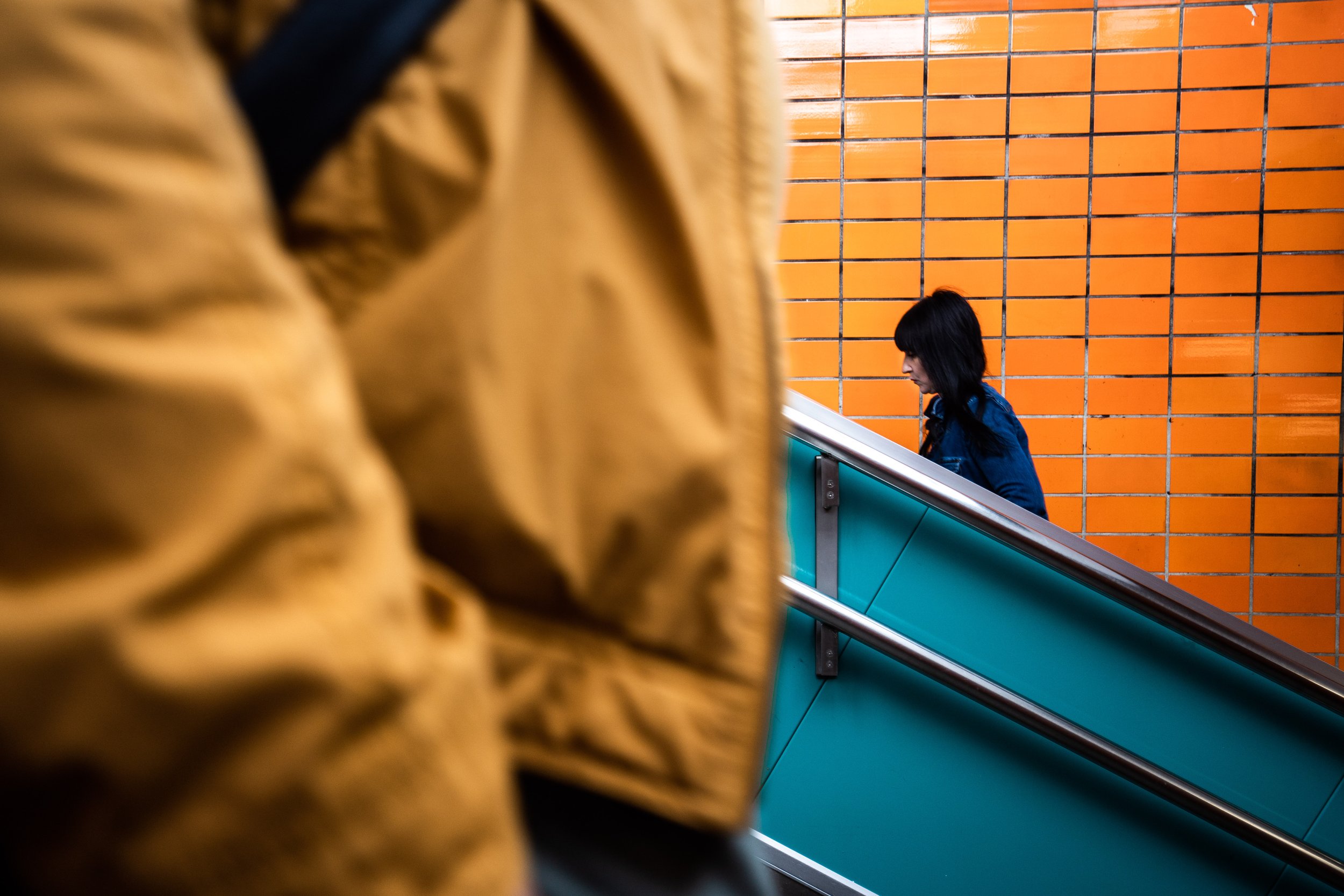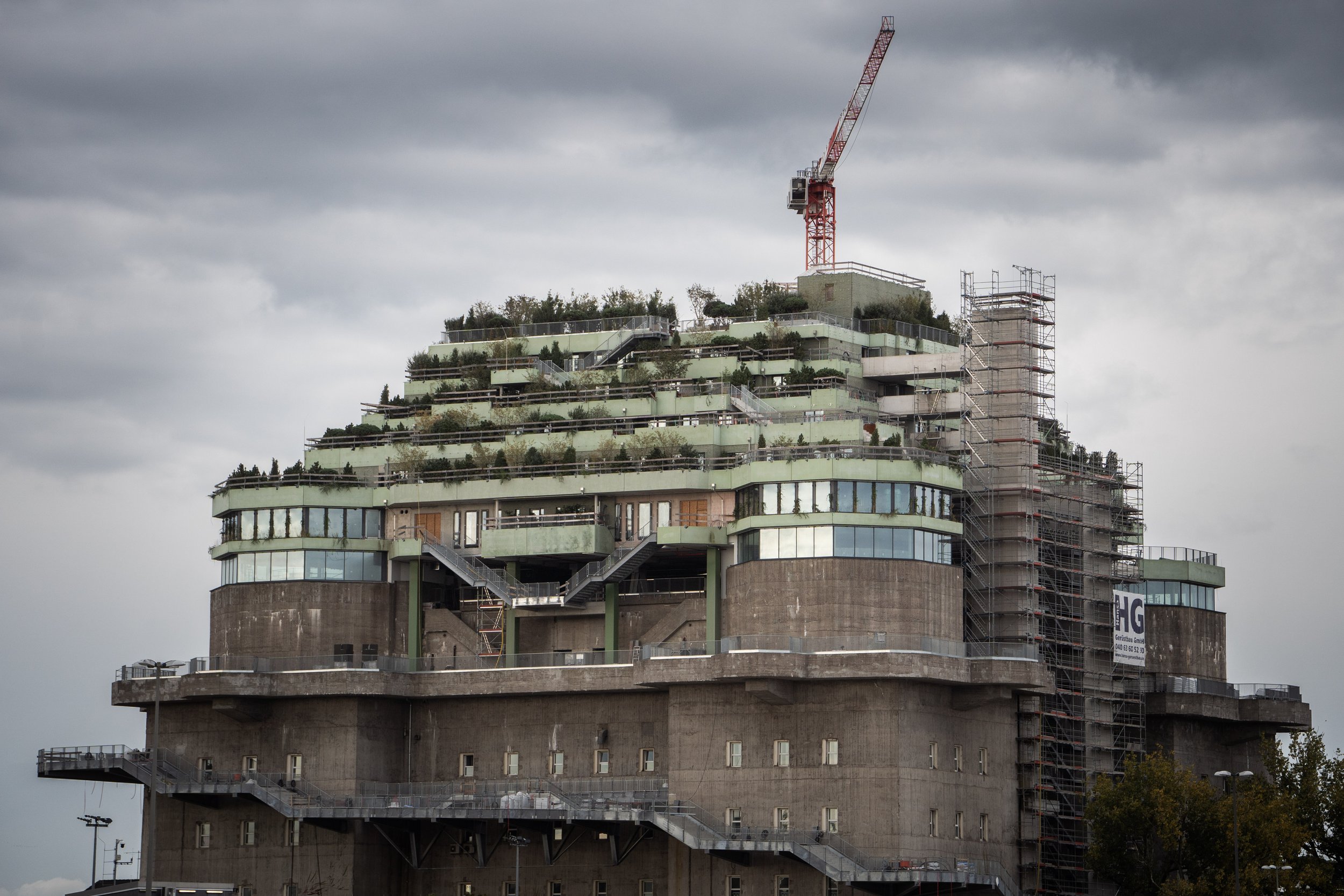Hamburg: This City Wears Character on Its Sleeve
Leaving Slovakia for Hamburg was like a breath of fresh air that I desperately needed. The recent election in Slovakia left me feeling disconnected from my own country, and the opportunity for a scholarship abroad couldn't have come at a better time. So, without hesitation, I packed my bags and hit the road to Germany. I was about to embark on a two-month adventure in a city I'd never visited before: Hamburg.
Upon arrival, I realized that I had booked myself into a hotel apartment, lacking a private kitchen and a washing machine. However, it did have something I cherished – a nearby bouldering place.
Hamburg, with its scenic beauty and character, immediately won me over. I'm a sucker for aimless walks and street photography and the city's unique blend of retro-futuristic charm, especially in its metro stations, caught my eye. This place, with its cute cafes and bakeries and street art could serve as an example for the term “city with character” in a picture dictionary.
My workspace, the RTL building in the city center, exuded a mid-'80s style inspired by ships in the nearby harbor across the Elbe River. The Science department at Stern Magazine welcomed me warmly when I first showed up, and my colleagues treated me exceptionally well.
I didn’t stay in town for long, as after just two days, I found myself on a train to Berlin. It was for a meeting from the International Journalism Programmes, which gave me and other reporters the opportunity to be in newsrooms abroad. I always had mixed feelings about Berlin. Everyone seemed to love it, except my best friend and me. I couldn't help but wonder if I was the problem. Berlin had always felt drug-ridden, but I was ready to give it another chance.
After a full day of work, I arrived for a meetup with fellow journalists from the IJP. I was there early, so I wandered into a dimly lit, divey pub nearby, an atmosphere I adored, and drank a cold one at the bar. Little did I know it was a legendary spot.
Dinner that night was at a slow-food restaurant owned by two Slovak ladies living in Berlin. After everyone left, I and my Slovak colleague Denisa stayed at the restaurant and drank wine, talking to the owners deep into the night. Our conversation ranged from politics to Slovak society. It was one of those surreal experiences, which seem too perfect to occur at random.
On Friday, we gathered at the newsroom of Table.Media. This unique platform in caught my attention, and I must admit, I'm genuinely fascinated by the media landscape in this country. The German market boasts a diverse readership to which all the different kinds of media projects can cater and stay afloat.
Table.Media operates primarily on a business-to-business model, which gives it the opportunity to sell subscriptions to their desks for a hefty sum, around 200 euros per section of the newspaper. However, companies are willing to pay this price because they receive high-end in-depth analyses on a wide range of topics.
Our visit to Table Media turned out to be an enlightening experience. I had the opportunity to give a presentation on the use of AI in journalism, and it went rather smoothly. Strangely enough, I discovered that I'm more outgoing and less microphone-shy when speaking in English, especially when addressing a small and friendly group of fellow journalists from the same program. It made for a relaxed and enjoyable atmosphere.
The day was packed with valuable interactions and networking opportunities. I made some promising contacts at Table.Media and gained insights into their operations.
We were fortunate enough to receive an invitation to Clemens's apartment for dinner. Clemens is the head of IJP, and played a pivotal role in facilitating our visit to Germany, where we had the chance to explore different newsrooms and gain valuable experience.
Rather than taking public transport to Clemens' place, I opted to walk. The 45-minute journey allowed me to delve deeper into the Berlin atmosphere and even capture some snapshots, though I won't claim they were award-winning photographs. Nonetheless, I relished the opportunity to be out and about, strolling through the city on my own.
Once we arrived at Clemens's apartment, he treated us to pizza. It was a laid-back affair, with engaging conversations flowing effortlessly in his cozy, old-school apartment. To top it off, Clemens handed me a book that I've since started reading. What struck me as particularly intriguing was that the book's story began at the same U-Bahn station I had used to travel from our hotel, a funny coincidence that added to an already thoughtful present.
After our delightful discussions, a few of us decided we wanted another beer. We made our way to a nearby supermarket, grabbed a couple of cans, and settled down outside to enjoy our drinks. I couldn't help but appreciate the German tradition of drinking al fresco, immersing oneself in the street's vibrant atmosphere.
Speaking of traditions, I've developed a fondness for Germany's graffiti culture, despite its somewhat destructive nature. It's a testament to people's passion for expressing their opinions about everything that matters to them. I've even grown to admire the unique style of an artist named Paradox, although I'm well aware of his reputation as a conspiracy theorist. From an artistic perspective, he's calligraphy style undeniably distinctive.
Later, I stumbled upon a few of Paradox's writings and met up with my colleague Danisa. On our way to Kreuzberg, where we had a meeting planned, we spotted three or four of his pieces adorning nearby buildings. Naturally, I couldn't resist taking a closer look and capturing them through my lens. Kreuzberg, with its unmistakable hipster vibe, oozes character and exudes a lively ambiance.
However, one thing I've found annoying about Berlin is the prevalence of cash-only establishments. It's a minor inconvenience, but it's surprising in a modern metropolis.
Nevertheless, we decided to revisit the restaurant where we had dinner the previous night. Danisa had an interview lined up with the restaurant's owners, so I photographed them for her. Afterward, we embarked on a leisurely stroll, eventually finding ourselves in the city center.
During our walk, we stumbled upon a charming bookshop, where we whiled away some delightful moments. Berlin, despite its quirks, had a unique charm that was impossible to deny.
Back in Hamburg, I spent a relaxing Sunday exploring the city, though the city center felt a bit lifeless compared to its neighborhoods.
The workweek officially began, and I had meetings at the newspaper. Making contacts and arranging interviews proved challenging, but I also worked on smaller stories, like the one about a colossal World War Two bunker.
It's one of the largest in Germany. It's not just its appearance that is astonishing, but the transformation it's undergoing is noteworthy too. Nestled in the heart of St. Pauli, this imposing structure, built by forced laborers in 1942, has long been a somber reminder of a painful past. But now, it’s undergoing a radical metamorphosis. A park adorning the roof, and a tree walk spiraling around the building will soon become a permanent part of it. This bunker is not just changing form, but also the sentiments attached to it. A place that once evoked negative emotions is blossoming into a vibrant and welcoming space.
During the week, I had the opportunity to meet with a photo editor from Stern Magazine, who offered some constructive criticism about my photography. Although it was tough to hear, it motivated me to improve and develop my own style. I realized that having a solid artistic background in photography was essential, something I lacked but was determined to work on.
In a way, the critique was a blessing, reminding me that there's always room for growth and improvement. The thought of endless learning and progress was both exciting and exhausting, but it was a journey I was willing to undertake.
So there you have it, a snapshot of my life in Hamburg. It's been a whirlwind of experiences, challenges, and self-discovery, and I can't wait to see what the coming weeks will bring.


























